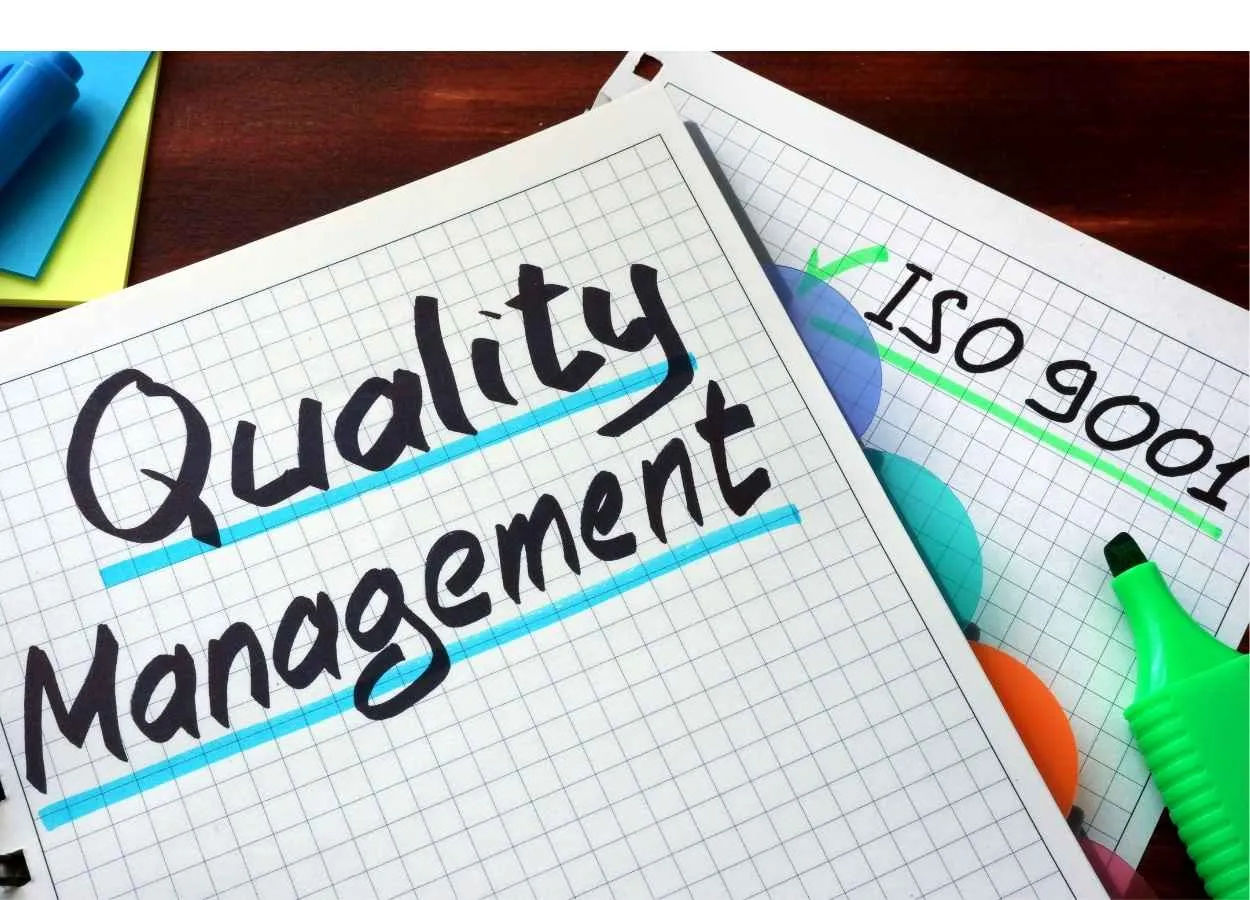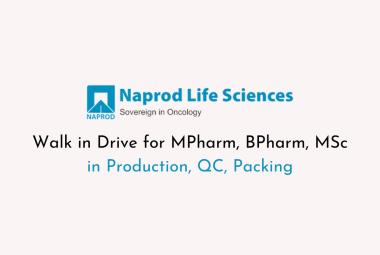About Author
Vikas Kumar Prajapati
Organization - Bansal College of Pharmacy,
Bhopal(M.P.)
Email: vikasprajapati8417@gmail.com
Abstract
Quality of pharmaceuticals has been an issue for WHO since its establishment. In present world people are more concerned about quality, safety and efficacy of pharmaceutical products.
Without assurance of meeting acceptable standards of quality, safety and efficacy of any pharmaceutical product, obviously quality of pharmaceutical product is compromised.
For management of Quality, Safety and Efficacy, Quality Management System (QMS) comes in to the picture. Quality management in pharmaceutical industry is one of the most important aspect of pharmaceutical product development. It is because quality of a pharmaceutical product is directly related to the safety of consumer/ patient.
For maintaining the quality, safety and efficacy companies follow several guidelines for example: USFDA, GMP, GLP, ICH, ISO etc.
This review mainly focuses on ISO 9000. ISO 9000 is a widely used quality management standard across the globe. Guidelines present in ISO 9000 are intended to increase business efficiency and customer satisfaction by establishing a quality management system, increasing productivity, reducing unnecessary cost and ensuring quality and process and products.
Main objective of this review is to highlight most important ISO 9000 requirements to produce an effective Quality Management System. This review also assembles ISO 9000 requirements in an effective way that will help scholars in their further research.
Introduction
Pharmaceutical Quality Management System
A pharmaceutical quality management system helps pharmaceutical organizations ensure the quality of products and process improvement.
It is applicable to drug products including biotechnology and biological products through out the product life cycle.
Elements of a pharmaceutical quality management system
Fundamental elements for effective pharmaceutical quality management system are as follows:
1. Process performance and product quality monitoring
2. Corrective action and preventive action (CAPA) system
3. Change monitoring system
4. Management review of process performance and product quality.
Applicable Pharmaceutical QMS Regulations
Some key regulations used in Pharmaceutical Quality Management System are written below:
1) ISO
2) cGMP
3) ICH guidelines Q10 on Pharmaceutical Management System
4) 21CFR (part211)
ISO (International Organization for Standardization)
ISO is a non-government organization founded on 23 February 1947. This organization develops and publishes a set of rules (a standard) worldwide.
These rules are universally recognized and accepted when these are implemented in a proper manner. It gives customers confidence that suppliers/organizations can consistently meet their needs.
ISO is an international standard setting body set by representatives of various national standard organizations and works in 165 countries.
Some of best known and most widely used standards of ISO are:
• ISO 9000 Family – Quality Management
• ISO/IEC 27001- Information Security Management
• ISO 45000 Family- Occupational Health and Safety
• ISO 14000 Family- Environmental Management
• ISO 17025 Testing and Calibration Laboratories
• ISO 20121-Sustainable Events
• ISO 22000-Food Safety Management
• ISO 31000 – Risk Management
• ISO 3166 – Country Codes
• ISO 50001 – Energy Management
ISO 9000
ISO 9000 is a series of international standards on Quality management and Quality assurance- guidelines which can be adopted by all types of organizations involved in production and supply of all kind of products and services.
Standards in the family are:
ISO 9000
ISO 9001
ISO 9002
ISO 9003
ISO 9004
ISO 9001 It covers model for Quality assurance in design development, production, installation and servicing.
ISO 9002 It covers Quality systems- Model for quality assurance in production, installation and servicing.
ISO 9003 It covers Model for quality assurance in final inspection and testing.
ISO 9004 It covers quality management and quality systems element- guidelines for quality management, planning, implementation and performance improvements.
Core Principles of ISO 9000
The seven quality management principles are:
QMP 1 – Customer focus
QMP 2 – Leadership QMP
QMP 3 – Engagement of people
QMP 4 – Process approach
QMP 5 – Improvement
QMP 6 – Evidence-based decision making
QMP 7 – Relationship management
ISO 9000 requirements
Management responsibility
Organization’s management shall create its quality policy. This quality policy shall be relevant to organization’s organizational goals and consumer needs. It is sole responsibility of management to understand this quality policy, implement and maintain it at all the levels of organization.
Quality system
The supplier/ Organization shall establish document and maintain the quality system. It shall also ensure that product quality is maintained as per specified in the quality system document.
Contract review
Contract review is an important step before submission of a contract. Organization shall ensure that contractor has capability to meet the contract requirement and deliver it in specified time. Contract requirements shall be adequately defined and well documented as well.
Design control
Supplier/Organization shall prepare plan for each design and development and also should define responsibilities for their implementation. Design development should be well document and shall be updated along with progress in design development. All modifications in design shall be identified, documented and reviewed by authorized person. Design validation also should be performed to review and ensure that it fulfils the expectations and needs of consumer.
Document and data control
Document and data control is a set practices to make sure documents are created, reviewed, distributed and disposed in a systemic and certifiable manner. The supplier/organization shall maintain a vibrant documentation and data control system. Supplier/Organization shall also ensure that documents and data required in operations shall available on all location where it is obligatory
Purchasing
Purchasing can be simply defined as the act of buying the goods and/or services that organization/company/supplier needs to operate and manufacture products.
Organization shall establish and maintain a documented procedure for purchasing of required goods. It shall also ensure that purchased goods/products meet the criteria of quality system.
Control of customer-supplied product
The supplier shall establish and maintain documented procedure for customer supplied-products. Marking, storage, handling and preservation of customer-supplied products should be controlled along with its activities related to supplies. Any occurrence of loss, damage or deterioration of customer supplied products is reported back to customer.
Product identification and traceability
Product identification is a wide-ranging concept to labeling the products. It includes product traceability along the supply chain, brand protection in market and contains a lot of information about the product.
The supplier/organization shall establish and maintain documented procedure for identification of products during production, supplying/receiving and installation. There shall also be a well-documented system to trace the products whenever required.
Process control
A process control in continuous production processes is ability to observe and adjust to get desired output. Supplier should control the processes that directly affect the quality of product. These processes should be carried out in controlled manner and under professional supervision.
Final inspection and testing
Supplier/organization shall carry out final inspection and testing process to ensure that finished product fulfils the requirements of quality system document. No product shall be dispatched until the completion of inspection and testing.
Control of inspection, measuring and test equipment
Inspection, measuring and test equipment shall be used in the manner to ensure that the measurement uncertainty is known. It should be consistent with required measuring capacity.
Purpose of this procedure is to provide a system and a set of instructions and to allocate responsibilities for inspection, identification, calibration and maintenance of measuring and test equipment.
Control of non-conforming products
The products that do not follow specific requirements should not be used or installed. Organization should form a specific well documented procedure for control of non-conforming products. These products should be controlled through:
• the process of identification
• documentation/record mechanism of non-conformities.
• segregation
• action to eliminate nonconformity
• re-evaluation of corrected product
• a notification to concerned authority
By following above written steps we can control non-conforming products during manufacturing operations.
Corrective and preventive action (CAPA)
CAPA is a key for continuous improvement in organization. It basically consists of retroactive or proactive improvement. Any preventive or corrective action taken to prevent or correct non conformities in the product should be of appropriate degree to magnitude of problem.
Handling, storage, packaging, preservation and delivery
Handling, storage, packaging, preservation and delivery shall be established and maintained through documentation by the organization. It shall be done according to proper planning and control.
Control of quality records
Quality records are used to demonstrate the conformance to specified requirements. Hundreds and thousands of regulated companies worldwide use master control document as the soul of Quality management system. These documentation procedures are used for Identification, Collection, indexing, access, filing, storage, maintenance and disposition. These documentation procedures shall be established and maintained by the organization. All quality records should be comprehensible and stored in such a manner that they are readily retrievable.
Internal quality audits
Quality audit is a key element in the ISO quality system standard. Quality audits are typically performed at predefined time intervals. These are carried out by internal or external quality auditor or an audit team. Internal quality audits are performed to determine the effectiveness of quality system. It is also done to verify quality activities and its results.
Internal quality audit should be done by an independent auditor/ audit team which is not directly involved in the process of quality management system. The results of audit should be recorded. If any shortcomings found during audit, then personnel responsible for that area should take responsibility and correct it.
Training
Personnel involved in the quality management system shall be qualified to perform their tasks. They should have appropriate experience, trainings, education required. They shall be trained well and records of training should be maintained.
Servicing
Where ever and whenever servicing is required organization should document the procedures of servicing verify it and report that servicing meets the criteria of specific requirements.
Statistical techniques
Statistical process control is a method of quality control which is used to monitor and control the process. Statistical techniques make sure that process operates efficiently and producing maximum specification conforming product with less waste.
Statistical process has five steps:
1. Design the study
2. Collect the data
3. Describe the data
4. Make inferences
5. Take actions
These all above steps shall be followed to work efficiently with statistical techniques.
Organization should have appropriate documented procedures to implement and control the application of the statistical technique and maintain it.
Impact
ISO 9000 requirements will put a great impact on organizations. If any organization aspires to be ISO 9000 certified or want to retain it, they should follow up the procedures and should improve the standards of their products according to ISO guidelines. These implementations of ISO 9000 quality system results in improvement of business performance. Execution of relevant standards in an organization will make a positive impact on customer satisfaction and product quality.
Implementation of ISO 9000 standards impact directly and positively on:
1. Quality
2. Competition
3. Customer satisfaction
4. Employees
Benefits
1. It establishes and enforces consistent quality control.
2. CAPA required in standards assist improvements in production process.
3. Standards give a confidence to customers and strengthen relations b/w organization and customers.
4. Internal audit management reviews analysis of organization level data and documentation of procedures helps organization in taking right decisions.
5. ISO 9000 is also powerful marketing tool for holding organization.
6. ISO 9000 registration gives universal credibility to organizations and helps in getting approval of export of products to European union and beyond because products meet the criteria of EU requirement directives as well as requirements of other foreign countries as well.
7. It reduces the overall cost of quality. Though initially it costs a bit higher but it counter balances the cost of external and internal failures.
Conclusion
This review gives brief outline of Quality management System in Pharmaceutical industry along with requirements for ISO 9000 Standards Certification. ISO 9000 Certification will undoubtedly give an edge and ease in business operations in comparison to uncertified organizations. ISO encourages a better work environment, high customer satisfaction along with growth of organization. Establishment of Quality System document and proper implementation is a key to excel.
References
1. Available from: https://www.iso.org/.
2. Available from: https://asq.org/quality-resource/iso-9000.
3. https://www.iso.org/popular-standards.html
4. International Organization for Standardization. The ISO survey of certification, 2009. Geneva, Switzerland 2011. Available from: https://asq.org/quality-resource/iso-9000
5. Available from: https://www.simplerqms.com/pharmceutical-quality-management-system/
6. Singh AP, Singh AP, Singh N. Quality management systems and ISO 9000 effectiveness: A review, Indian J Pharm. Pharmacol 2020;7(3)142-146.
7. Dubey Neetu, Gupta Himanshu, et al. Pharmaceutical Quality Management Systems: Current concept, Journal of Advanced Pharmacy Education& research 2: 120-124(2011) ISSN 2249-3379
8. Sharma S. et al. Pharmaceutical Quality Management Systems: A Review, International Journal of Drug Regulatory Affairs;2014,2(3), 67-78
9. Lachman L., Liberman, H. A., & Kanig, J. L., “The Theory and Practice of Industrial Pharmacy, fourth edition, reprint 2015, CBS publishers and distributors Pvt. Ltd., page no. 1073- 1081.
NOW YOU CAN ALSO PUBLISH YOUR ARTICLE ONLINE.
SUBMIT YOUR ARTICLE/PROJECT AT admin@pharmatutor.org
FIND OUT MORE ARTICLES AT OUR DATABASE









